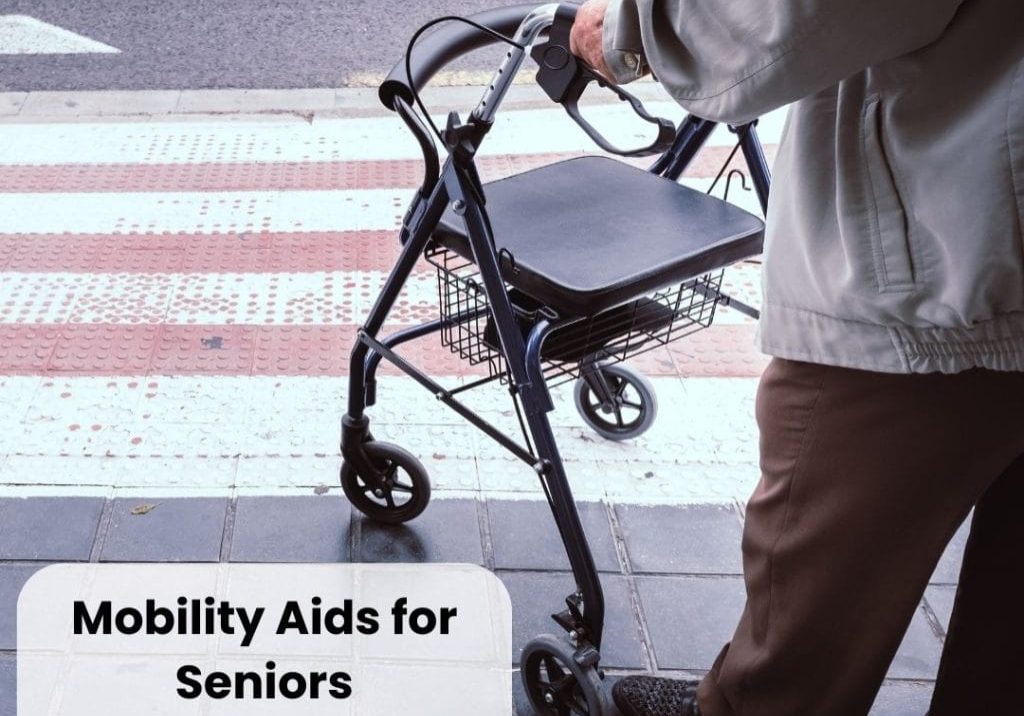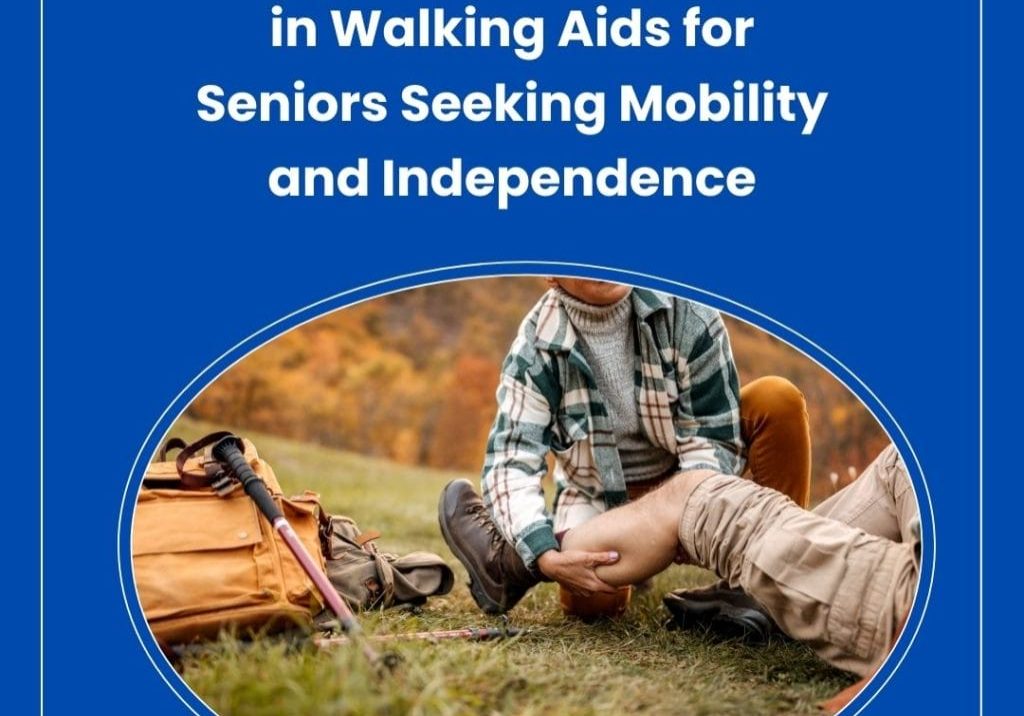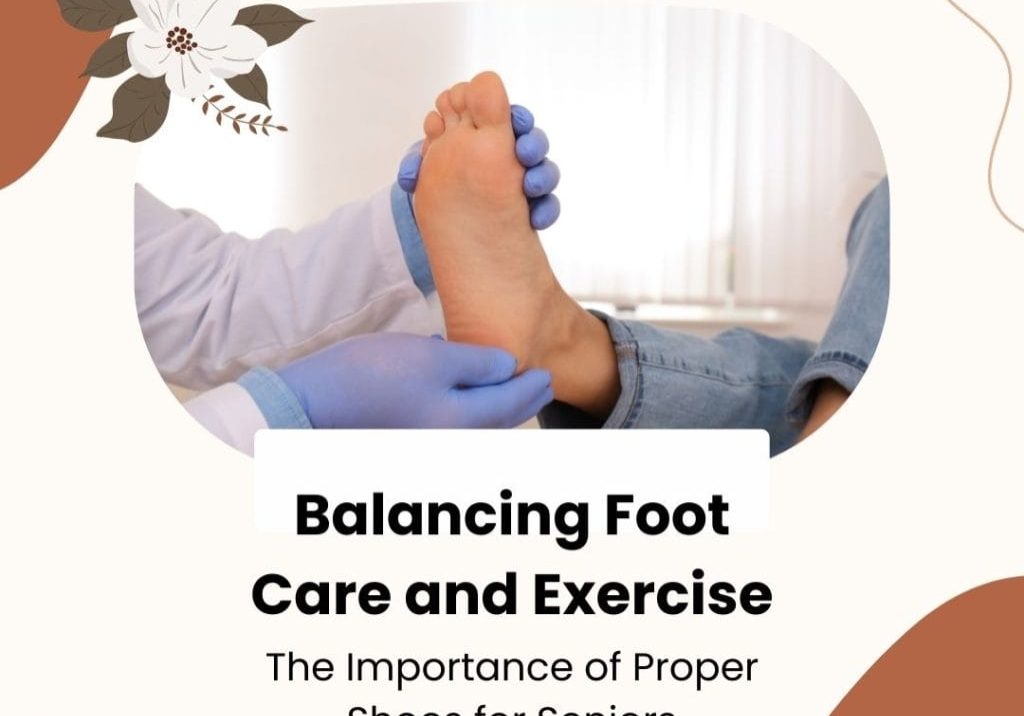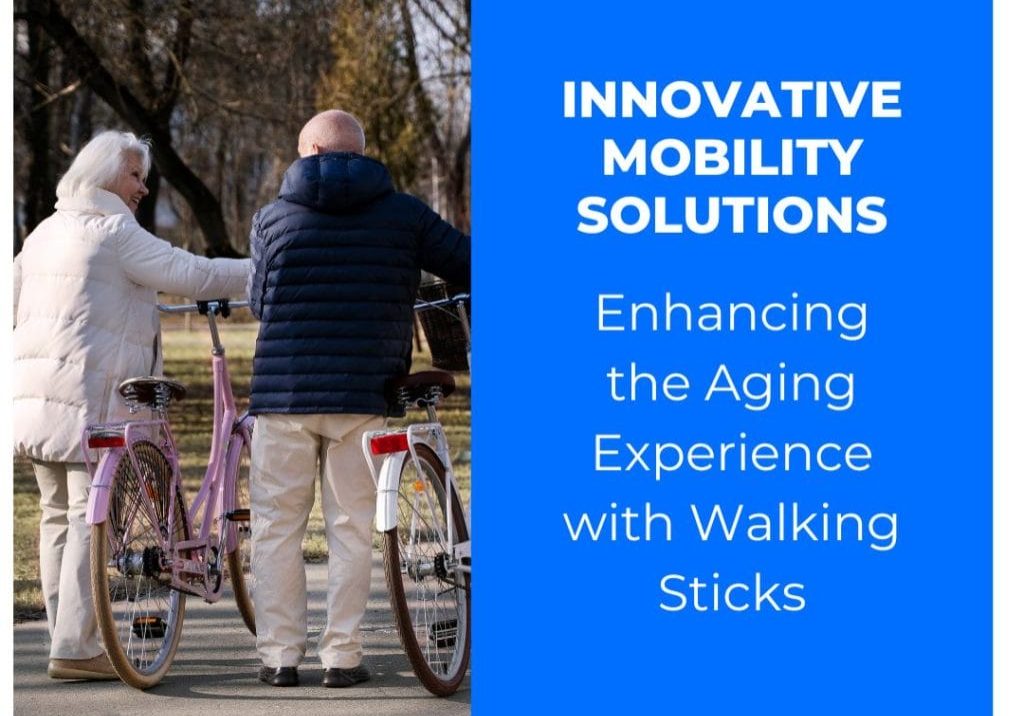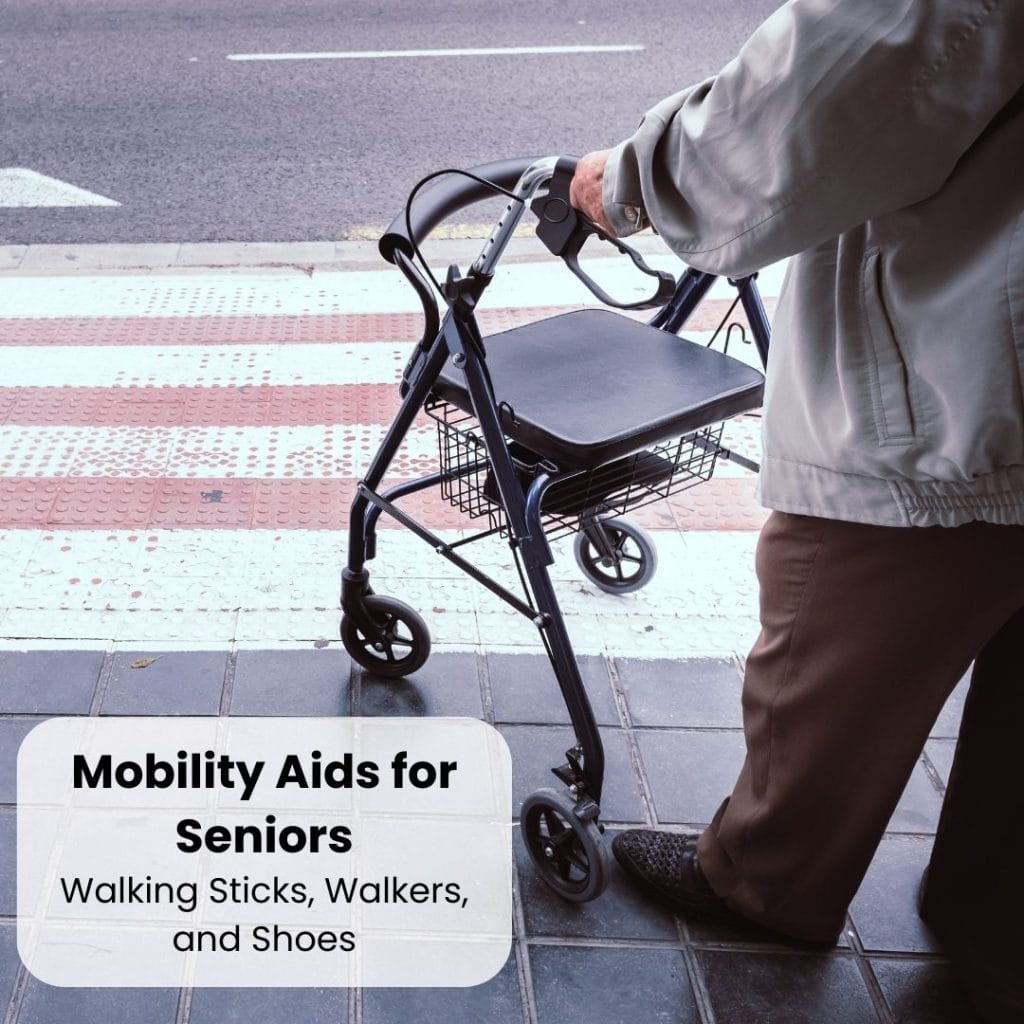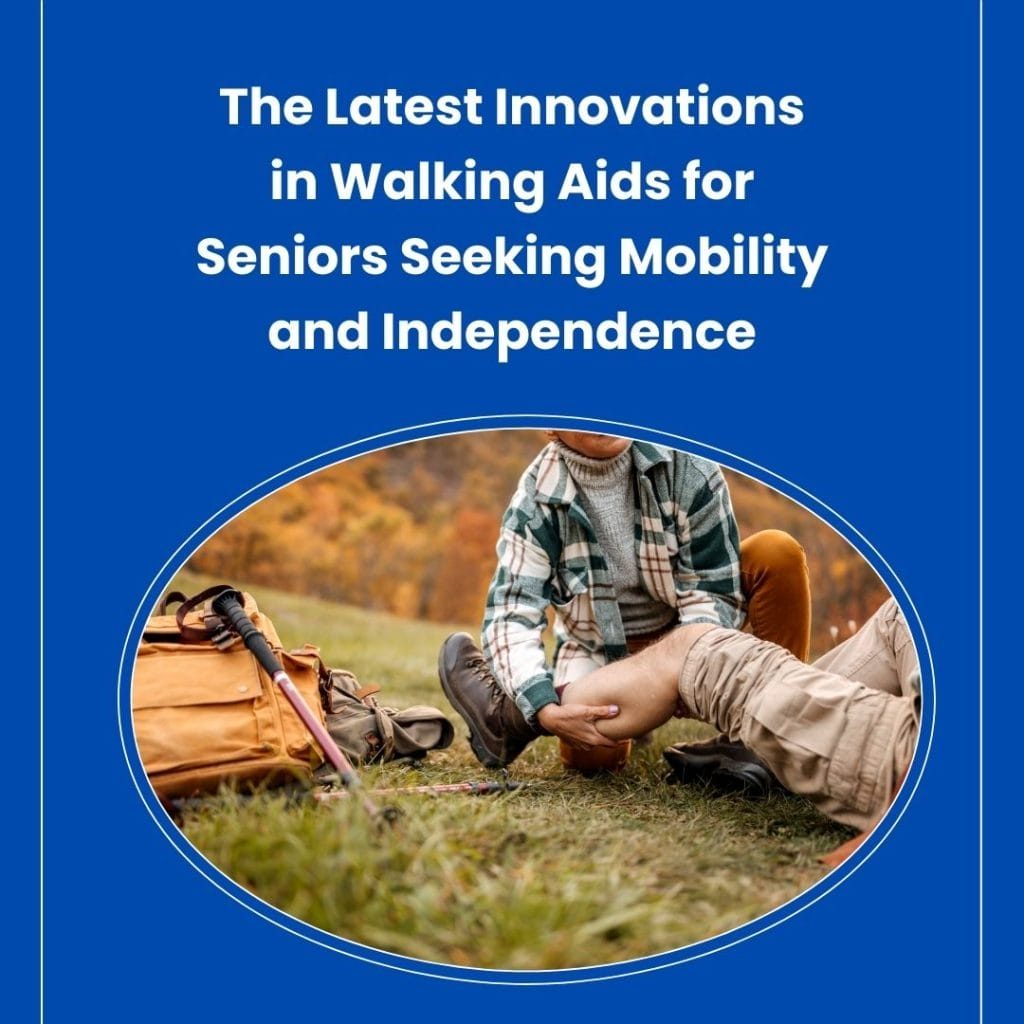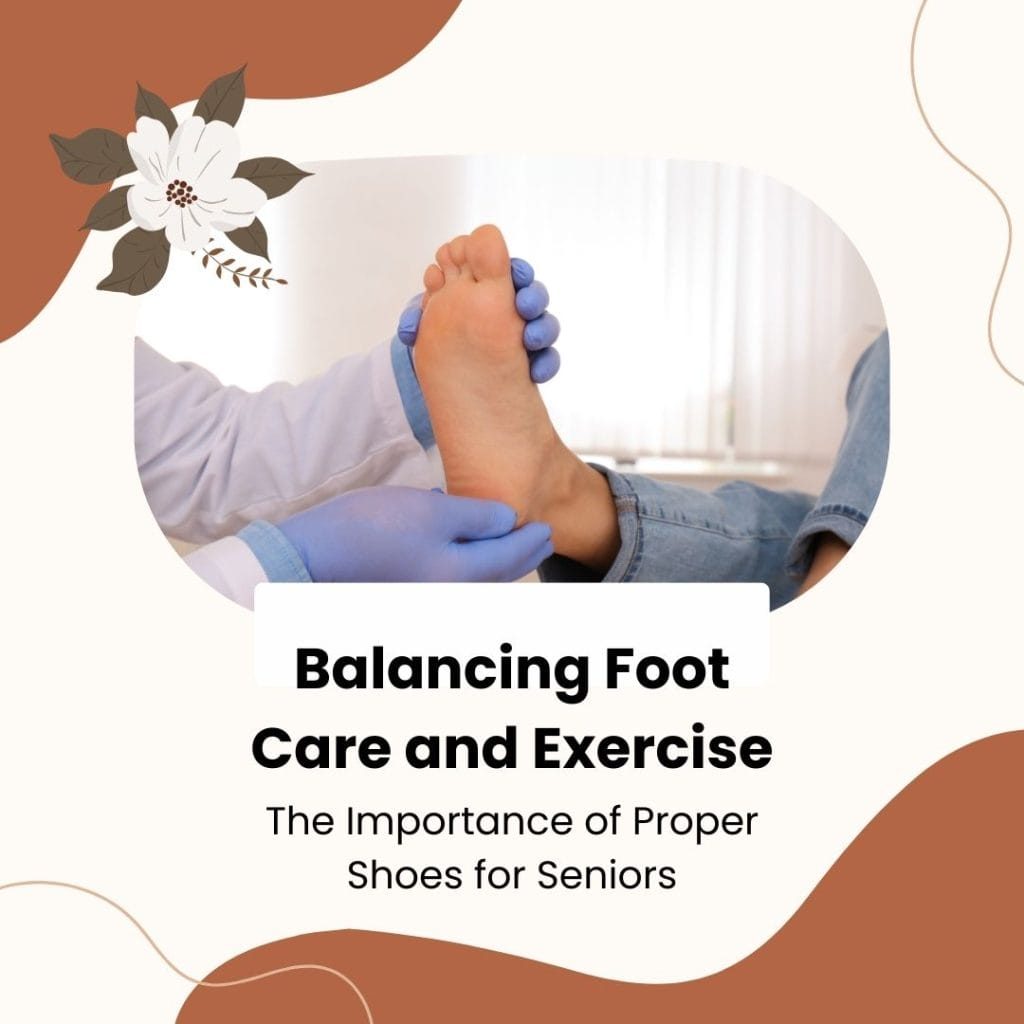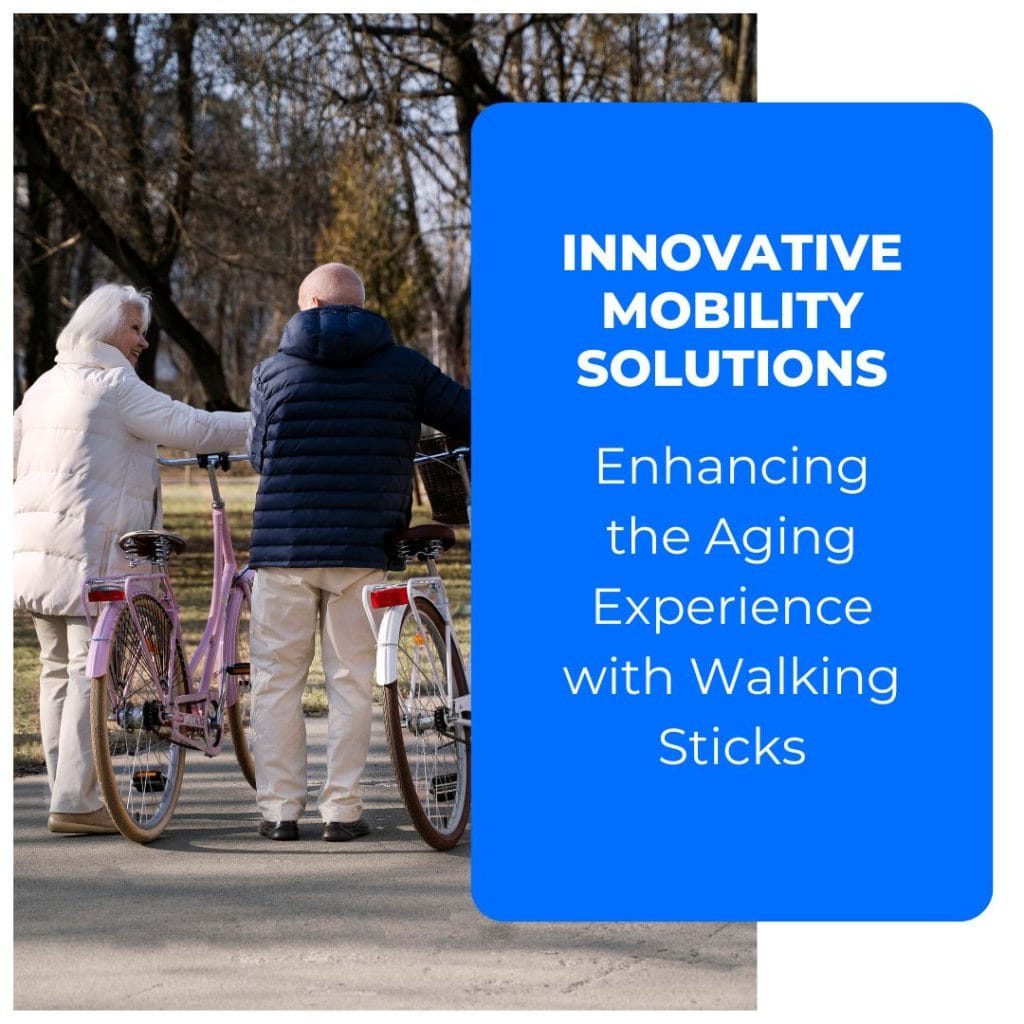As the world’s population ages, the demand for adaptive walking aids is rapidly increasing. These invaluable tools are critical in maintaining mobility, independence, and quality of life among seniors. Enhanced mobility not only facilitates physical movement but also bolsters emotional well-being by fostering self-reliance and active participation in community life. In this document, we will discuss the latest innovations in adaptive walking aids for seniors and how they are revolutionizing the way seniors move and live.
Traditional Walking Aids
Traditionally, walking aids such as canes and walkers have been the go-to mobility tools for seniors. Canes are portable, lightweight, and provide balance by distributing the user’s weight from the legs to the upper body. Walkers, on the other hand, offer more substantial support, with four points of contact on the ground for enhanced stability.
Limitations and Challenges with Traditional Walking Aids
While these traditional aids are beneficial, they have inevitable limitations and challenges. Many seniors find canes and walkers to be cumbersome and inconvenient, particularly when navigating narrow spaces or uneven terrains. These aids can also pose a risk of falls if they slip or if the user loses their grip. Furthermore, continued use can lead to fatigue and strain in the arms and upper body, which can deter seniors from engaging in prolonged physical activity. These limitations highlight the need for more adaptive and user-friendly walking aids for seniors.
Rise of Adaptive Walking Aids
In recent years, we’ve witnessed a pivotal shift toward more adaptive walking aids. These ingenious devices are designed to overcome the shortcomings of traditional aids and provide a more tailored assistance to the individual needs of seniors. The main goal of these adaptive aids is to offer user-friendly functionality, greater mobility, and improved safety. Over time, the evolution of these tools has been marked by the inclusion of features like adjustable heights, foldability for easy transportation, ergonomic grips for comfort, and stylish designs for aesthetics.
The incorporation of technology has undeniably been a game-changer in enhancing the functionality and user experience of these aids. For instance, some modern walking aids are equipped with sensors that detect obstacles in the user’s path, thereby reducing the risk of falls. Others include features such as GPS for navigation, emergency call buttons for safety, and fitness tracking capabilities to monitor the user’s health. Technological advancements have also led to the development of smart canes and walkers that integrate with smartphones, allowing users to receive calls, listen to music or access maps, all while on the move. These tech-driven innovations have undoubtedly made adaptive walking aids not just essential mobility tools, but also companions that contribute to a more active, independent, and fulfilling life for seniors.
Smart Canes and Walkers: The Future of Mobility
The advancements in adaptive walking aids are a testament to how technology is transforming the lives of seniors. Smart canes and walkers, with their impressive features and capabilities, have become the go-to choice for many seniors looking to enhance their mobility and independence. These devices not only provide physical support but also offer peace of mind to both users and their caregivers. With the rapid pace of innovation, we can only anticipate that these aids will continue to evolve and become even more sophisticated in the future.
Features and Benefits of Smart Canes with Built-In Sensors and GPS
Smart canes equipped with built-in sensors and GPS technology are truly an innovative departure from traditional models. These cutting-edge sensors are designed to detect obstacles in the user’s path, alerting them in advance to reduce the risk of falls. The cane’s in-built GPS system serves a dual purpose: it aids in navigation, especially in unfamiliar areas, and allows caregivers to monitor the user’s location in real-time, enhancing safety and peace of mind. These enhancements, combined with the basic functionality of support and balance, make smart canes an invaluable tool for seniors.
Fall Prevention and Emergency Response with Smart Canes
Fall prevention is a paramount concern for seniors, and smart canes play a crucial role in mitigating this risk. The integrated sensors provide real-time detection of potential stumbling blocks, enabling the user to navigate safely. In case of a fall, the smart cane can activate an emergency response. Some models are equipped with automatic alert systems that send a distress signal to predefined contacts or emergency services when an unusual movement (such as a fall) is detected. This rapid alert system ensures that help is dispatched promptly, reducing the potential for severe injury and providing users and their families with an additional layer of security.
Motorized Walkers: The Ultimate Solution for Seniors with Limited Mobility
For seniors with limited mobility, traditional walkers can be challenging to use due to the significant physical effort required. However, motorized walkers have revolutionized the way these individuals move and live their lives. These battery-powered devices are designed to provide effortless support and mobility for users who find it difficult or tiring to operate manual walkers. Motorized walkers enable seniors to move around independently, easing the strain on their arms and upper body and allowing them to engage in more physical activity without fatigue.
Versatility and Convenience with Motorized Walkers
One of the most significant advantages of motorized walkers is their versatility. These devices are primarily designed for use indoors, but they can also be used outdoors in parks, shopping malls, and other public spaces. Unlike traditional walkers, which can be bulky and cumbersome to transport, motorized walkers are lightweight and compact, making them easy to store in a car or carry on public transportation. This allows seniors to maintain an active lifestyle without the limitations of manual walking aids.
Exoskeletons and Robotic Assistance: The Future of Adaptive Walking Aids
As technology continues to evolve, we can expect to see more futuristic solutions for adaptive walking aids. Exoskeletons and robotic assistance have already made significant strides in research and development, with the potential to transform mobility and independence for seniors. These technologies involve attaching wearable devices or using robots to provide support and improve movement for individuals with limited mobility. The possibilities are endless, and we can only hope that these advancements will soon become a reality for seniors in need of adaptive walking aids.
Despite the challenges that come with aging, technology is offering practical solutions to help seniors maintain their independence and live fulfilling lives. With continued innovation, adaptive walking aids will undoubtedly continue to improve and cater more effectively to the unique needs of seniors, providing them with the support and confidence to lead active and independent lifestyles. The future of mobility for seniors is truly exciting, with technology playing a crucial role in enabling them to age gracefully and comfortably. So, let’s embrace these technological advancements and empower seniors to live their lives to the fullest!
Overview of Exoskeleton Technology for Walking Assistance
Exoskeleton technology for walking assistance is a groundbreaking innovation in the field of assistive mobility devices. These wearable robots, typically made from a combination of hard and soft materials, mimic the structure of the user’s body, providing support and enhancing movement. Sensors and actuators embedded in the exoskeleton detect user intent and assist in the completion of desired movements, such as standing, walking, or climbing stairs. While originally designed for military and industrial applications, exoskeleton technology is showing immense promise in healthcare and rehabilitation, particularly for seniors and those with mobility impairments.
Applications of Robotic Assistance in Promoting Independence
Robotic assistance tools are paving the way for enhanced independence among seniors and individuals with mobility restrictions. Robotic walkers, for instance, integrate automation and advanced controls to provide reliable support while moving. Some models can even adapt to changing terrain and provide increased stability. On a smaller scale, robotic grabbers help individuals perform daily tasks like picking up objects or opening doors without human assistance. Additionally, advancements in social robotics offer companionship and cognitive stimulation, with robots capable of engaging in conversation, reminding users of appointments, or even detecting signs of distress and contacting family or caregivers. This use of robotic assistance promotes self-sufficiency, improves quality of life, and reduces reliance on caregivers, marking a major step forward in assistive care.
Assistive Devices with AI Integration: A Game-Changer for Seniors
The integration of Artificial Intelligence (AI) in assistive devices is transforming the way seniors navigate their daily lives. AI-powered walking aids can analyze user data, anticipate needs, and adapt accordingly to provide a personalized experience. For instance, based on a user’s walking patterns and habits, an AI-enabled walker can suggest the most suitable routes and make real-time adjustments to maximize comfort and efficiency. These devices can even use machine learning algorithms to detect potential hazards and prevent falls, making them a crucial safety feature for seniors with limited mobility.
Integration of Artificial Intelligence in Walking Aids for Personalized Support
The incorporation of artificial intelligence (AI) in walking aids is a significant leap in personalized care for seniors. AI algorithms learn from the user’s behavior and movement patterns, allowing for customized assistance that adapts to individual needs. The system can detect changes in the user’s gait, speed, and balance, and adjust the support provided by the walking aid accordingly. This level of personalization ensures that the device is always offering the right amount of support at the right time, greatly enhancing the user’s mobility and independence.
Real-Time Monitoring and Adaptive Adjustments Based on User Needs
AI-enabled walking aids are equipped with advanced sensors that continuously monitor the user’s movements. This real-time monitoring allows the system to make immediate adjustments based on the user’s current needs. For example, if the user starts to lose balance, the system could instantly provide additional support to prevent a fall. Similarly, if the user’s gait changes due to fatigue or discomfort, the device could adapt to these changes and provide additional assistance. This level of responsiveness not only improves the user’s safety but also ensures a comfortable and natural walking experience.
Design Considerations for Seniors Using Adaptive Walking Aids
As with any technology, there are specific design considerations that must be taken into account when creating adaptive walking aids for seniors. These devices should be lightweight and comfortable to wear, with adjustable features to accommodate different body types and mobility levels. They should also have user-friendly controls and clear visual indicators for ease of use.
Importance of Ergonomic and User-Friendly Design
The design of adaptive walking aids should prioritize ergonomics and user-friendliness. An ergonomically designed device ensures that it is not only comfortable to use but also reduces the risk of strain or injury. Ideally, the design should promote a natural posture and ease of movement, minimizing the physical effort required to use the device. User-friendliness is another crucial consideration. Users, particularly seniors, may be intimidated by complex technology, so it’s essential to have intuitive controls and easy-to-understand instructions. Labels should be clear and large enough to read, buttons should be easy to press, and there should be intuitive feedback mechanisms to indicate when a function has been activated or if there is an error.
Customization Options to Cater to Individual Preferences and Needs
Customization is another important design consideration for adaptive walking aids. Everyone’s mobility needs are unique, and as such, a one-size-fits-all approach may not be effective. The device should allow for adjustments in terms of height, speed, and level of support, enabling users to adapt the device to their specific needs. Furthermore, the ability to customize control settings would allow users to interact with the device in the most comfortable and intuitive way for them. This could include options for left or right-hand controls, adjustable sensitivity, or the option to use voice commands. Offering customization options not only improves the device’s functionality but also significantly contributes to enhancing the user’s confidence, autonomy, and overall quality of life.
Case Studies
Case Study 1: Improved Mobility with Adaptive Walking Aids
Mr. Roberts, an 85-year-old senior living in a retirement community in California, had been struggling with mobility due to arthritis and a previous knee injury. With the introduction of an AI-powered adaptive walking aid, he experienced a significant improvement in his mobility. The device’s sensors adjusted the support level based on his movement patterns and immediate needs, enabling him to move around with less pain and more confidence. The walking aid’s impact on his daily life was immediate and profound – he was able to independently perform daily tasks such as grocery shopping, walking his dog, and engaging in social activities within the community.
Case Study 2: Boosting Confidence and Independence
Ms. Thompson, a 78-year-old lady residing in New York, had been heavily relying on her caregiver due to balance issues and fear of falls. The acquisition of an AI-enabled walking aid revolutionized her daily life. The real-time monitoring and instant adjustment of the device provided her the necessary support and drastically reduced her fear of falling. She was able to navigate her home and neighborhood independently, enhancing her self-confidence. The device not only improved her mobility but also significantly contributed to her mental well-being, as she regained her independence and freedom.
Case Study 3: Enhancement in Overall Quality of Life
Mr. Clark, a 90-year-old retiree from Florida, had limited mobility due to age-related muscle weakness. An adaptive walking aid equipped with AI capabilities was introduced to assist him. The device’s real-time adaptive adjustments based on his gait patterns facilitated smooth and natural movement, reducing the strain on his muscles. In addition to improving his mobility, the use of the device resulted in enhanced physical health as he could engage in regular walks, contributing to better cardiovascular health. His active lifestyle and regained independence had a positive impact on his overall quality of life.
Challenges and Solutions
Challenges in Adoption of Adaptive Walking Aids
Adopting new technology, especially for seniors, can often present several challenges. A primary concern is the apprehension towards learning new technology and the fear of not being able to adapt. There can also be challenges related to cost accessibility, as these devices, given their advanced features, may not be affordable for all.
Strategies to Enhance Awareness and Accessibility
To overcome these barriers, it’s crucial to implement strategies that enhance awareness and accessibility. Educational programs can be conducted to familiarize seniors with adaptive walking aids and their benefits. This can be done through demonstrations, hands-on training, and providing ample resources for continuous learning. To address cost issues, government subsidies, or financing schemes could be explored. Collaborating with healthcare institutions and insurance companies could also pave the way to make these devices more affordable and accessible to seniors.
By addressing these challenges proactively, we can ensure that the benefits of adaptive walking aids extend to a larger population, ultimately aiming for a society where seniors can lead an active, independent, and fulfilling life.
Future Trends in Adaptive Walking Aid Technology
The future of adaptive walking aids holds exciting prospects. One trend we anticipate is the integration of AI with other emerging technologies such as Virtual Reality (VR). This blend could create immersive therapeutic experiences, aiding users in rehabilitation and improving their walking skills. Furthermore, the rise of the Internet of Things (IoT) could foster greater connectivity between adaptive walking aids and other smart devices, facilitating a more comprehensive health management system. For instance, data from the walking aid could be connected with smart home systems, enabling automatic adjustments to lighting or furniture arrangement based on the user’s movements and needs.
Potential Breakthroughs in Senior Mobility
In terms of potential breakthroughs, we foresee the development of exoskeleton technology that can integrate with adaptive walking aids. Such technology would not only assist with walking but could also help in performing a range of daily tasks, enhancing user autonomy significantly. Additionally, advancements in material science could lead to the production of lighter, yet stronger and more durable adaptive walking aids, making them easier to maneuver without compromising on the level of support provided. Another breakthrough could be the incorporation of advanced predictive algorithms that can anticipate and prevent potential falls, adding an additional layer of safety for users. These technological advancements hold the potential to revolutionize senior mobility, making life more comfortable and independent for our aging population.
Conclusion
In conclusion, adaptive walking aids have proven to be transformative in promoting senior mobility. Through the use of advanced technologies like AI, these devices have catered to the unique requirements of senior citizens like Mr. Roberts, Ms. Thompson, and Mr. Clark, enhancing their mobility and confidence. These cases attest to the profound impact of these aids in improving the quality of life, enabling seniors to lead active, independent lifestyles.
Looking forward, advancements in adaptive walking aid technology promise the potential for even greater autonomy for the aging population. They encourage a more inclusive society where seniors can fully participate in daily activities without fear of mobility limitations. By addressing the challenges of technology adoption and cost accessibility, we can ensure that these benefits reach a larger section of society, making an inclusive, independent, and fulfilling lifestyle a reality for all seniors.

